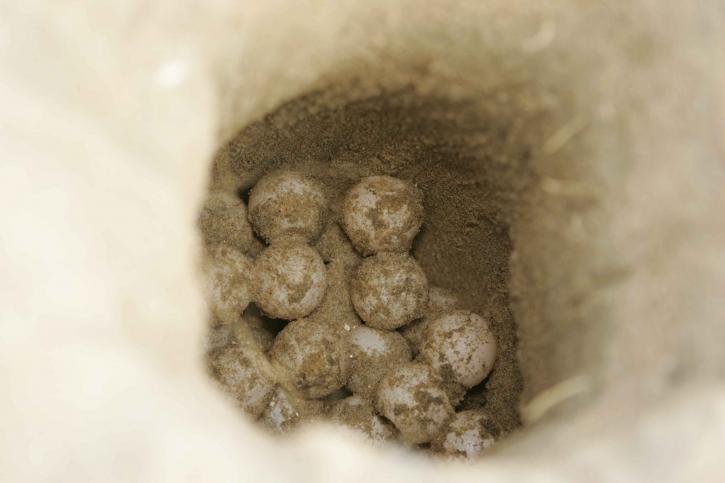In the early hours of Earth Day, 22nd April 2018, a female green sea turtle was coming to an end of her journey as she finished laying the last of her 150 ping pong sized eggs in the sand close to the tree line at Gili Lankanfushi.
The adult turtle was around one meter in size with her carapace (shell) measuring around 80cm. After arriving on the beach just before high tide (at 4:30am) she searched for a safe spot to lay her eggs in an area where the sand was soft enough to dig a hole around 50 cm deep.
She succeeded on her second attempt and went into a trance to deliver her clutch. We did not want to disturb her but used this opportunity to assess her size and check the hole was deep enough for her eggs.

After a two-hour process, she began to make her way back to the ocean. Her energy levels were high and her timing impeccable as she re-entered the water at 6:15am, just before first light.
The nest is in an area that could be disturbed by hosts or guests walking, so we constructed a make shift boundary to protect the eggs from the pressure of human feet above.
After a 60 day incubation period we hope to witness the emergence of the hatchlings as they make their way down to the ocean. Turtle hatchlings follow the light of the moon to reach the ocean so we will be sure to turn off external lights during this time as any light pollution could cause the hatchlings to make a wrong turn and reduce their chance of survival.
Female green sea turtles nest three to five times per season and they lay their eggs on beaches within a 100kilometre radius of where they hatched. We hope she is planning to nest again on Gili’s shores in the next few months. We noticed a unique marking on her carapace and we will try to use this white mark to identify her in the future. However, we were not able to get clear photographic identification as we did not want to disturb her behaviour by shining a light on her.

As she entered the water, we became acutely aware of the responsibility we had been given – to keep these eggs safe from disturbance and predators for around two months until they emerge as hatchlings.
As only 1 in 1000 turtle hatchlings make it to adulthood we can safely say that Gili is carrying precious cargo into the months ahead.